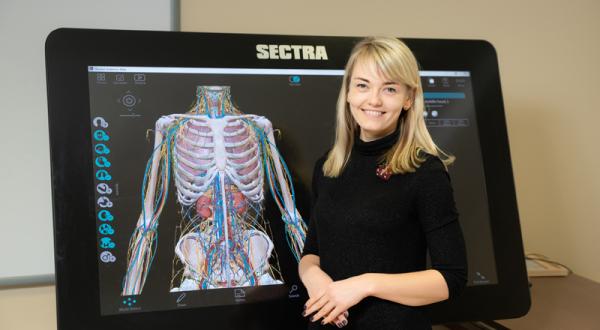Researcher Mārtiņš Kalējs: basic sciences drive progress
Mārtiņš Kalējs, cardiac surgeon and leading researcher of the Scientific Laboratory of Biomechanics at Rīga Stradiņš University (RSU), has dreamed about science since childhood. The young doctor will, therefore, make the most of his opportunity of participating and presenting at the RSU International Research Conference, Knowledge for Use in Practice.
Mārtiņš excelled at natural sciences already as a pupil at Mērsrags Secondary School. Back then he participated in various academic olympiads and competitions which allowed him to improve his skills. He especially liked theoretical physics and math. Mārtiņš recalls that he never played doctors or cured sick teddy bears – his focus has been on research instead of on clinical work from the very start. Prior to starting his studies Mārtiņš compared the curricula offered by several Latvian universities, and found the opportunities offered by RSU most suitable to his interests. He could not choose between physics-mathematics and medicine, but after careful consideration the balance eventually tipped in favour of medicine. After being admitted to RSU Mārtiņš soon realised that he preferred research over working as a physician, but found himself in cardiac surgery for practical reasons. He explains diplomatically that it is difficult to make a living working as a researcher in Latvia, and sees combining practical work and research as the best solution. When asked about how he splits his time, Mārtiņš says that he devotes afternoons, evenings and weekends to research.
Why am I involved in research?
As research has been my dream since childhood, I have actively sought it out and engaged with it since I was a first year student studying tumour cell biology. Several years ago, under the leadership of RSU Associate Professor and cardiac surgeon Pēteris Stradiņš, we carried out a study that resulted in the discovery of the optimal polymer to design a new generation of heart valves. It does, however, require a consortium with a huge infrastructure, human resources and funding to develop a functioning heart valve prosthesis. Even though opportunities to obtain funding allocated by the Latvian Council of Science are gradually growing, this funding would not be sufficient for the scope of this project. The idea has not been forgotten, although it is currently on the back burner. Due to this focus is instead on other essential biomechanic studies, such as research into the mechanical properties of the aorta, and other clinical studies.

Why will I attend the RSU International Scientific Conference?
During the conference I will share the outcomes of my study about total arterial coronary artery bypass surgery. I will only be presenting early data as such surgeries have only recently started being performed in Latvia. We should, therefore, take the opportunity to ask our foreign colleagues to share their long-term results. For around 40 years bypass grafts had mainly been created from venous tissues, whereas for the past few years arterial material has increasingly been used for bypass grafts. These graft materials have varying longevity potential – 40–60 % of venous tissue grafts and 10 % of arterial tissue grafts last for ten years after a surgery. This reduces the need for the patient to have repeated interventions.
Why should others attend the conference?
I am certain that it is natural sciences which will make the world develop and progress. RSU Research Week, with its conferences and thematic workgroups, has evolved into a Baltic-wide event, and I think that every Latvian healthcare professional should allocate time to attend the conference to present their studies, and get to know about the research currently being carried out by their colleagues. We are often aware of studies carried out in France or Italy while having no idea about what is happening here in Kleisti or at the Hospital of Traumatology and Orthopaedics. This event presents a great opportunity to discover what is new in Latvia in other fields of medicine. In other words, the need for information exchange among our closest neighbours is self-evident, but unfortunately relevant information does not always reach everyone who would be interested.
Related news
 Virtual reality and simulations – not only for education, but also for researchResearchers up close
Virtual reality and simulations – not only for education, but also for researchResearchers up close